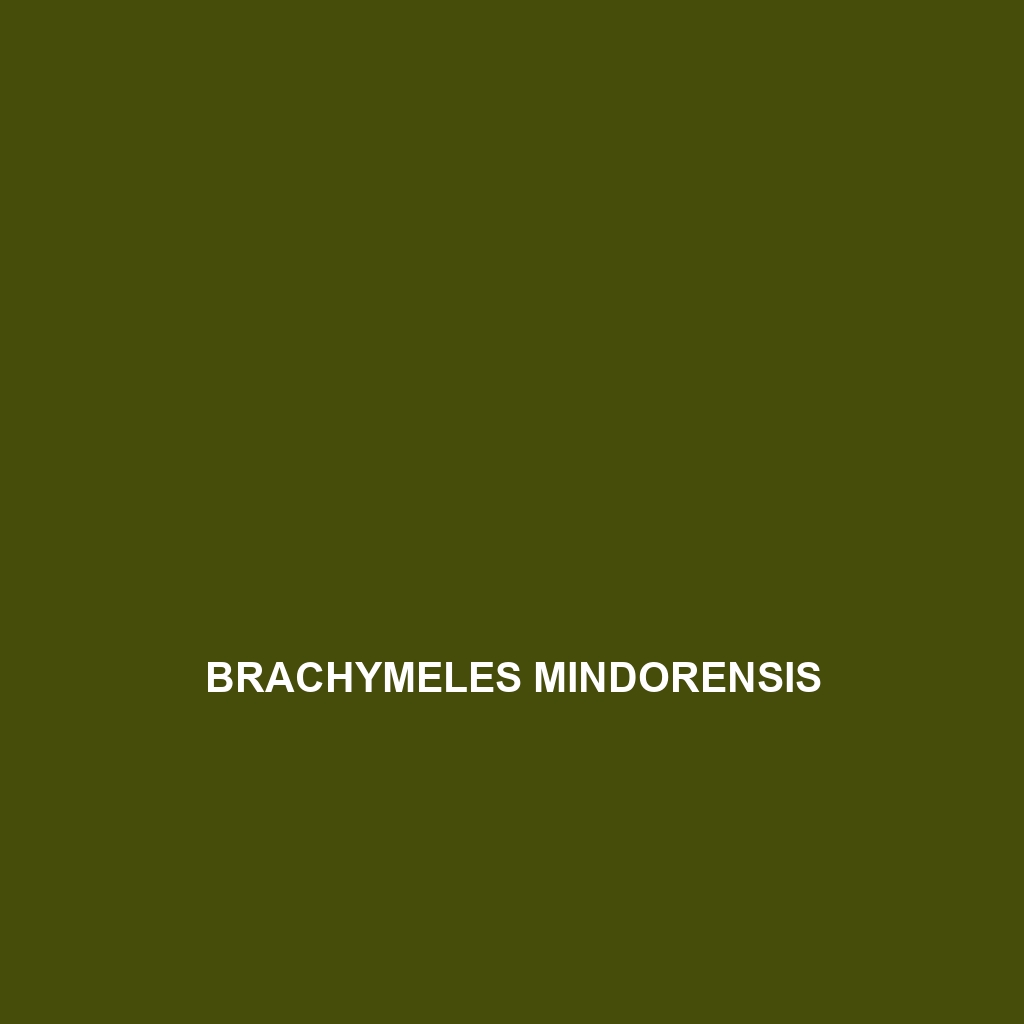Brachymeles mindorensis: A Unique Species Overview
Common Name: Brachymeles mindorensis
Scientific Name: Brachymeles mindorensis
Habitat
Brachymeles mindorensis is primarily found in the tropical rainforests of the Philippines, specifically on the island of Mindoro. This species prefers moist, shaded environments with abundant leaf litter, which provides cover and foraging opportunities. The humid climate and rich biodiversity of this region contribute to the species’ habitat preferences.
Physical Characteristics
Adult Brachymeles mindorensis typically reaches sizes of up to 15 centimeters in length. Their bodies are elongated and slender, with a smooth, shiny texture that is often a dark brown or olive green color, allowing them to blend seamlessly into their forest surroundings. They possess short limbs and a pointed snout, which are distinctive features aiding in their burrowing behavior.
Behavior
This species exhibits predominantly nocturnal behavior, becoming active at night to forage for food. Brachymeles mindorensis is known for its burrowing habits, utilizing its sharp claws to dig into the moist earth and leaf litter in search of insects and other small invertebrates. During the day, they tend to remain hidden to avoid predation.
Diet
Brachymeles mindorensis primarily feeds on a diet consisting of a variety of insects, worms, and other small invertebrates found within the forest soil and leaf litter. Their feeding habits play a crucial role in the ecosystem as they help control insect populations and contribute to nutrient recycling in their habitat.
Reproduction
The reproductive habits of Brachymeles mindorensis include seasonal breeding, usually occurring during the rainy months. Females lay eggs in moist, covered areas where the offspring can develop. Depending on environmental conditions, the number of eggs can vary, and the care of the young after hatching remains largely unobserved, highlighting the elusive nature of this species.
Conservation Status
Brachymeles mindorensis is currently classified as vulnerable due to habitat loss caused by deforestation and land conversion for agriculture. Conservation efforts are crucial for preserving this unique species, as its limited geographic distribution makes it particularly susceptible to environmental changes.
Interesting Facts
One fascinating aspect of Brachymeles mindorensis is its ability to regenerate its tail after losing it to predators. This adaptation not only helps in evading threats but also reflects the resilience of this species in its natural habitat. Furthermore, little is known about its full range of behaviors, making it an intriguing subject for herpetological studies.
Role in Ecosystem
Brachymeles mindorensis plays a vital role in its ecosystem as a consumer of insects and other invertebrates, which helps maintain the ecological balance. Their burrowing activity aerates the soil, promoting plant growth and enhancing the overall health of the forest environment they inhabit. Protecting this species is essential for ensuring the biodiversity of its native ecosystem.
